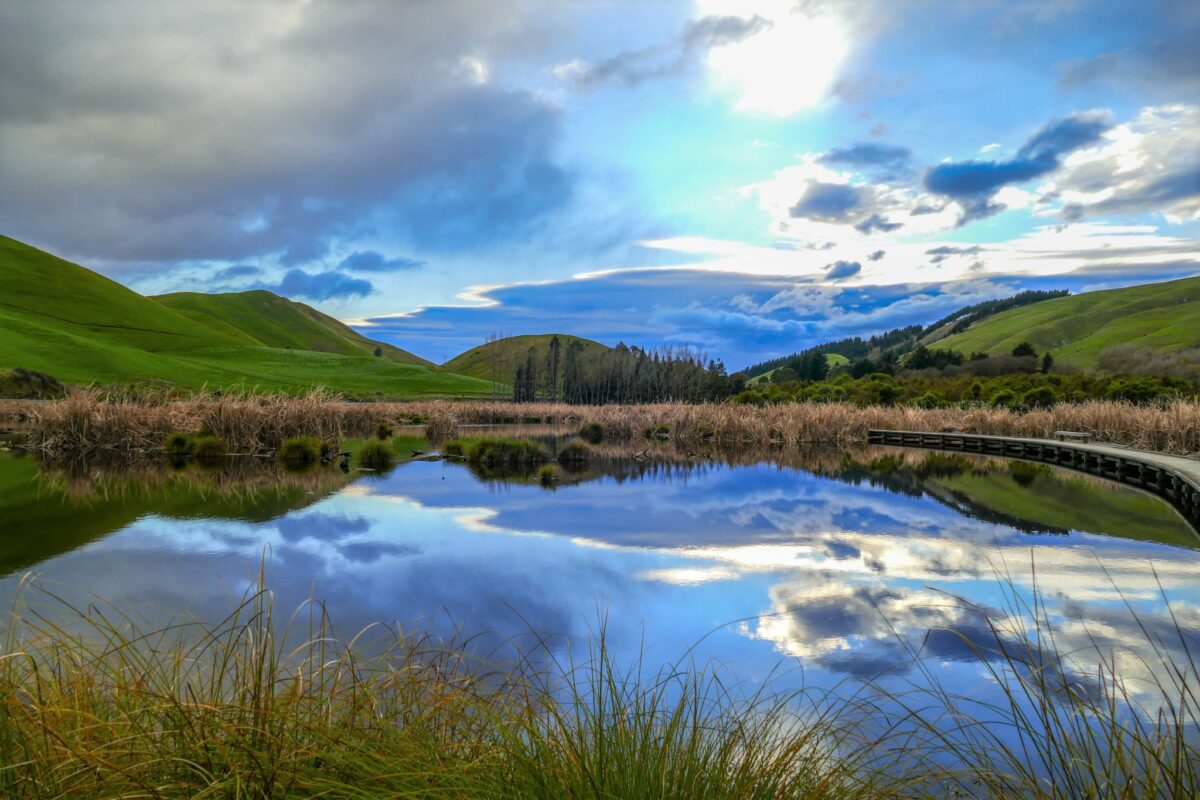Pekapeka Regional Park is a 98 hectare wetlands with high biodiversity value located 12 kms south of Hastings beside SH2. It is a remnant of a former extensive wetland system covering the majority of the Poukawa basin. Tree roots have been found beneath the peat which suggest the wetland was once forested – more than 10,000 years ago.
The 4.5 km long x 800m wide reserve is a great destination for family picnics or school trips as it is home to a wide variety of birds and wildlife as well as over 80 species of plants. Talented amateur photographer, Ashley Clapperton, has allowed me to share his absolutely stunning photos. Thanks Ashley.
For a long time, wetlands weren’t valued for the important systems that they are. For many years Pekapeka was used as an illegal dumpsite and, among other rubbish, the remains of the demolished Pacific and Mayfair Hotels are here. The Hawke’s Bay Regional Council, which currently owns 90% of the area, began restoring the wetlands in the late 1990’s with the removal of willows and the construction of a perimeter fence. It has left some of the rubble and reinforcing rods exposed as a stark reminder of how badly people have treated these important ecosystems in the past.
There has also been huge community input and countless volunteer hours put into the restoration. Now, it is rated one of the most ecologically valuable wetlands in Hawke’s Bay.

Wetlands are not only culturally important, but they also help protect our natural environment by: improving water quality; filtering nutrients and sediment; providing a rich supply of food for birds, fish, and animals and a home to flora and fauna; plus contributing to flood control by helping to absorb high rainfall.
Since 1997, Pekapeka has had waahi tapu (sacred) status under the Historic Places Act 1993. Pekapeka is Māori for ‘bat’ and there used to be a colony in nearby caves.
When treading the boardwalks, look out for: NZ dabchick, little black shag, little shag, white faced heron, Australasian bittern (very rare), mute swan, grey teal, marsh crake, spotless crake, pied stilt, shining cuckoo, kingfisher, welcome swallow, fantail, silvereye, black shag, Australian harrier and coot (photographed).
Remember to bring your camera or binoculars for some great close-up bird watching but please leave your dogs at home because of the wildlife. Read more here on the Regional Council website.


